Have you ever seen the TV show “Expedition Unknown”? The host, a guy with a degree in archaeology, named Josh Gates, investigates the “greatest legends in history”. On one of the shows he investigates the legend of the “lost cross” of Jesus Christ. In one of the scenes of the show, he interviews an “expert” in Roman crucifixion who made the claim that due to the lack of “archaeological evidence” Jesus could not have been crucified on a “T” shaped cross, it had to have been an “X” shaped one. His reasons were: 1. Nails in the hands and feet of the victim would not support the body on a cross; 2.There is no archeological evidence for this being done; 3. It would be too difficult to raise a “T” shaped cross; and 4. Even nails in the wrists and ankles would not work – they might support a body, but the person would pass out from the pain and suffocate before they regained consciousness. And “the Romans were about torture and would not want the person to pass out and therefore not suffer while they died”. He went on to claim that the “only evidence in existence” of a Roman crucifixion, was a single heal bone (which he had) with a spike driven through it from the inside to the outside of the heal. That meant that the outside of the victim’s foot was placed against the wood of the cross and the nail was then driven through it. He concluded from all this that the Romans had to have used “X” shaped crosses.
There are several problems with his reasoning. Contrary to his claims, there are other skeletal remains from the Roman era showing nail scars in the bones of the hands and feet – and especially the ankles and wrists. Several years ago, there was another show on TV called “The Naked Archeologist”, where a guy (Simcha Jacobovici) investigated “ancient mysteries”, only this time he was a Canadian Jew investigating things from the Bible. As a self described “investigative archeologist”, he investigated the truth of the Biblical stories. And his investigations were not just things from the Hebrew Scriptures – like the Exodus – he also investigated things from the New Testament – like the crucifixion. On one of his shows he did investigate the crucifixion and was shown several sets of bones, both wrist bones and ankle bones, that had nail scares in them indicating the person had been crucified. The archaeologist who showed him these bones also told him that he had seen bones from the hands and feet with what looked like nail scars in them as well. He also talked to scholars who specialized in the written history of the time of Jesus, and they showed him several accounts of crucifixions that described what was done. They described the use of “T” shaped crosses, nails driven in the wrists and ankles, (and / or hands and feet – and even the genitals, knees and elbows) and ropes being used to tie the victim to the cross. (And by the way, these ropes would leave absolutely no “archeological evidence” for anyone to find because the evidence of their use would be in the soft tissues of the arms and legs of the body not the bones.) The ropes were used to support the body, not the nails, the nails were just used to supply the torture. Whether it is true or not I don’t know as I have not seen the historical evidence for it, but some have claimed that large “washers” were put on the nails before they were driven into the victim to keep the nail heads from being pulled through the victim’s flesh by their own weight, so the claim that nails “would not support the victim’s weight” would be irrelevant. The Romans had enough ingenuity to figure out what they needed to do to achieve the results they wanted. Just look at all the weeks of work they went through just to build a ramp so they could attack a few hundred rebels at Masada, not to mention all the roads, aqueducts, the Coliseum and other buildings and temples the built, some of which are still standing today.
And, these texts he was shown, described the feet being placed in several different positions, including being twisted sideways before being nailed in place. And as for which style of cross would be easier to raise, if you were making a permanent installation, an “X” type might work, but I think you would have a hard time putting someone on it. I don’t see how raising an “X” shaped cross would be easier than digging a single hole and using ropes, poles, and a bunch of Roman soldiers (which Roman seemed to have an unlimited supply of) to raise a “T” shaped cross into place. And once it is up, just drive some rocks or wedges in around its base to hold it in place. For the “X” shape, you would need to dig two trenches and while the beams might not need to be as long, it would still be about as heavy if not heavier because both “arms” would be the same length. And then, do you notch the beams so they lay flat, or do you just lay one on top of the other and nail them in place? If you are going to notch them, 90 degree notches are smaller and much easier to make than angled ones. But that is a lot of work to go to just to torture someone to death. Leaving them un-notched would cause much more pain, but would also leave the two arms out of alignment with each other when you go to dig the holes to put them in. And then, once upright, you have two holes to fill in to keep it in place. So all in all, I think it would require a lot more work for it than for the “traditional” cross.
However, that is not my real reason for the “T” shaped cross. My reason is the “Cross in the Wilderness”. The one that showed up several thousand years before Rome ever crucified its first victim, in fact long before Rome even existed. And that is what we are going to look at today. So what cross am I talking about? Well, actually there were two crosses in the wilderness. So where were they? I admit, they really are a bit hard to see, so I would not be surprised at all if you have never noticed them. But, if we look closely I think we will be able to see them.
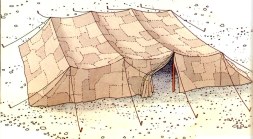
Figure 1. Typical Desert Tent
In Numbers chapter 2 there is a list of the tribes of Israel that gives how many men were able to serve in the army from each tribe and where they were to camp and what order they were march in when they were moving from camp to camp while on their way from Egypt to the Promised Land. It starts out, “Now the Lord spoke to Moses and Aaron, saying, “The sons of Israel shall camp, each by his own standard, with the banners of their fathers’ households; they shall camp around the tent of meeting at a distance.” (Numbers 2:1-2 NASB Revised) It then goes on to indicate exactly where each tribe was to camp and how many camps there were in each tribe, and who their leader was. Numbers 2:3-9 starts the list with Judah camping on the east side of the tent of meeting, and says that there were 74,600 warriors. Next is Issachar with 54,400 men; and then Zebulon with 57,400 giving a total number of warriors and their camps of 186,400. Then Numbers 2:10-16 lists those camping on the south side. First was the tribe of Reuben with 46,500 men. Then Simeon with 59,300, and then Gad with 45,650. That made a total of 151,450 warriors and their camps. Numbers 2:17 says the Levites were in the middle, and Numbers 2:18-24 lists those who were to camp on the west side. First was Ephraim with 40,500, followed by Manasseh with 32,200. Then Benjamin with 35,400. This gave them a total of 108,100 warriors and their camps. Finally, Numbers 2:25-31 lists Dan with 62,700 men. Asher had 41,500 men, and last was Naphtali with 53,400 fighting men. Their camp had a total of 157,600 warriors in it. Verse 32 gives the total of 603,550 warriors in the entire camp, but verse 33 says that the Levites were not numbered in this count.
Have you ever wondered why this was ever included in the Bible? I mean, who really cares who camped where and how many were in each camp? What relevance could it possibly have to anything? When you are reading through this part of the Bible, do you read it all, or are you like me and just skim through it as fast as you can to get to the “good” parts? Numbers 1:48 & 52-54 says, “For the Lord had spoken to Moses saying, . . . ‘The sons of Israel shall camp, each man by his own camp, and each man by his own standard, according to their armies. But the Levites shall camp around the tabernacle of the testimony, so that there will be no wrath on the congregation of the sons of Israel. So the Levites shall keep charge of the tabernacle of the testimony.’ Thus the sons of Israel did; according to all which the Lord had commanded Moses, so they did.” They camped exactly where God told them to camp, so it must mean something don’t you think? And, then Moses wrote it all down for us to read, why? Paul tells us, “All Scripture is inspired by God and is profitable for teaching, for reproof, for correction, for training in righteousness; so the man of God maybe adequately equipped for every good work.” (2 Timothy 3:16-17) So God must have had some reason to have Moses include it, but what is it? I believe Jesus gives us the reason. He once told a bunch of Jews who were wanting to stone Him for blasphemy, “You search the Scriptures because you think in them you have eternal life; it is these that testify of Me: and you are unwilling to come to Me so that you may have eternal life.” And a bit later in the conversation He said, “Do not think that I will accuse you before the Father; the one who accuses you is Moses, in whom you have placed your hope. If you believed Moses, you would have believed Me, for he wrote about Me. But if you do not believe his writings, how will you believe My words?” (John 5:39-40 & 45-47) So, who wrote what we just read in Numbers? Moses! And who does Jesus tell us Moses wrote about? Jesus! So, somehow, all these lists and numbers are supposed to tell us something about Jesus, but what?
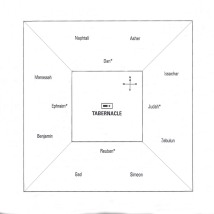
Figure 2. Common Encampment Layout
I think we need to take a closer look at all those numbers and lists and see what they might tell us about Jesus. First, a question: Have you ever seen a drawing or painting of the camp of the Israelites in the wilderness? I bet it looked just like all the ones I’ve seen. The Tabernacle surrounded by all the tents of the people in a huge square. In Figure 2, there is one glaring problem, where are the Levites? But is that really the way they set up camp? Exactly where were the
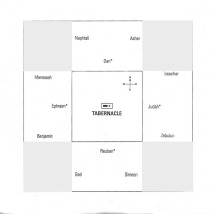
Figure 3. Drawing Showing Problem Areas
various tribes told to camp? Numbers 2:3 on the east side; Numbers 2:10 on the south side; Numbers 2:18 on the west side; and Numbers 2:25 on the north side. Now that brings up a question: Are those camped in the corners of that big square – the shaded areas of Figure 3 – north or east of the Tabernacle? North or west? South or east? Or south or west? So, how do those areas fulfill the requirement to camp to the east, north, west, or south? They don’t seem to do they? So just maybe they didn’t really camp there after all. Maybe they really did camp north, south, east, and west. Here, in Figure 4, is one version of what that might look like, but there are several problems with it. First, the
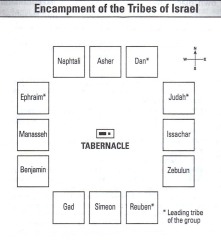
Figure 4. Encampment Solution With 3 Problems
Levites are missing, and second, the wording of the text implies to me that the order of encampment worked outward from the Tabernacle, i.e., the leader’s tribe was nearest and each successive tribe followed as you moved outward. Not to mention the encampment was much, much larger than this!
Now, what about all those numbers? What significance could they possibly have? Well, let’s take a look at them. Numbers 2:9 says the camp of Judah totaled 186,400 and they were camped on the east side (verse 3). Numbers 2:16 says Reuben had 151,450 and camped on the south side (verse 10). Numbers 2:24 says Ephraim contained 108,100 and camped on the west side (verse 18). And finally the camp of Dan had 157,600 (Numbers 2:31) and camped on the north side of the Tent of Meeting (verse 25).
Oh, we can’t forget the tribe uncounted tribe – Levi. Numbers1:53 tells us that unlike the others tribes they did indeed camp “around” the Tabernacle, that their camps were to create a barrier or veil between the Tent of Meeting and the rest of the camp. Numbers 3 tells which of the families of the tribe of Levi camped where around the Tent of Meeting, and what their duties were in taking care of it and everything associated with it. However, when they were counted, neither households or warriors were counted, but every male a month old or older was counted, so we have no idea how many camps there were, but we can get relative numbers. Numbers 3:22-23 tells us 7,500 Gershonites camped “westward”. Numbers 3:28-29 says 8,600 Kohathites were camped “southward”. Numbers 3:34-35 indicates 6,200 Merarites camped “northward”. And Numbers 3:38 says only Moses, Aaron, and Aaron’s sons camped on the east side of the Tent of Meeting. As I said earlier, we have no idea how many camps there actually were, or how the number in each family group listed would compare with the actual number of camps.
In Numbers 4 we find another listing for the tribe of Levi, this time giving the number of men between the ages of 30 and 50 who would do the actual work of caring for the Tabernacle and all its equipment. Numbers 4:36 says that of the 8,600 Kohathites camped “southward”, only 2,700 were eligible for duty. According to Numbers 4:40 only 2,630 of the 7,500 Gershonites camped “westward” could serve, and Numbers 4:44 lists 3,200 out of the 6,200 Merarites camped “northward” were eligible to care for their part of the Tabernacle.
Now did you notice something different about here the Levites were to camp? Rather than camping north, south, or west, they were to camp “northward”, “southward”, and “westward” of the Tent of Meeting, with Moses, Aaron, and Aaron’s sons filling in on the east side. This means they completely surrounded the Tabernacle otherwise they would not have been able to create the barrier around it that God required of them.
Also, after entering the Promised Land, all the land within 2000 cubits of every Levite city belonged to the Levites so it is believed by most scholars that the same applied here, that all the land within 2000 cubits of the Most Holy Place (or more precisely, the Ark of the Covenant) “belonged” to the Levites. And it is this square that the rest of the camp is located off of. This makes a lot of sense, can you imagine how long the east side of the camp would be if it was only the 12 cubits north to south of the Tabernacle? That would give you two rows of tents facing each other, and with 186,400 camps, that means there would be 93,200 tents in each row! If each tent took up about 20 cubits then the rows would be 1,864,000 cubits long, or 2,796,00 feet (529.5 miles)! Even using the 50 cubits of the court yard would still give you about 7 rows of tents 527,759.6 cubits long or 791,631.9 feet (149.9 miles). However, using the 2000 cubit square would allow around 282 rows which would make it 13,193.9 cubits long or 19,790.8 feet (3.75 miles). And before someone complains about my math, there are different cubits, the Holy things – including the Levitical area – used the “long” cubit of 25.43 inches while the common, 18 inch cubit, was used to buy and sell things and the royal cubit of 20.6 inches was used in construction. So the 2000 cubit area for the Levites would actually be 2825.6 common cubits or 4238 feet 4 inches square.
One other thing I should mention, Numbers 10:3 indicates that the entire camp was to assemble “before Moses at the door of the Tent of Meeting” at various times, and Exodus 38:13-14 tells us that the gateway to the courtyard around the Tent of Meeting was on the east side. So now we know why only Moses, Aaron, and his sons camped there. There needed to be a clear area for the camp to assemble in, and as indicated in Numbers 3:38, their camps were to be part of the barrier between the Tabernacle and the rest of the camp. With only their 5 camps (7 before Nadab and Abihu were put to death by God for burning “strange” fire) on the east side, this would provide the space required. With the area provided by the 2000 cubit square, there would be enough space for every male counted for any reason in the census to have 6 additional family members without using any of the area west of the east end of the courtyard
Now here is where it gets interesting, if we have the rest of the tribes camp directly east, north, west, and south of the Tabernacle, then the numbers in each “camp” create something interesting. Did you notice that Dan and Reuben had very similar numbers in their camps – 157,600 vs, 151,600? And Judah with 186,400 had many more than Ephraim did with only 108,100? And each of these pairs of camps are opposite each other? So, what would the camp look like if we take all that into account?
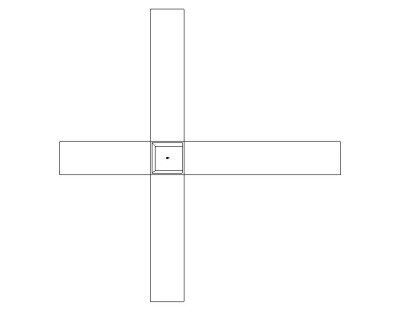
Figure 5. Cross Encampment
Interesting isn’t? That is why I believe in the traditional T shaped cross. A cross, hidden in a bunch of numbers and instructions on where each tribe was supposed to camp! And like me, I bet you normally just rushed through all that thinking it didn’t have any relevance to us today.
So why is this so important? Because it is meant to draw our attention to an even more important cross. But to see that cross we will need to go to The Cross in the Wilderness – Part 2
Hi bro ric
Your exposition is intrestings i did not finish reading all due to my children hanging on me a lot when im home but i would like to say to all the archeologist that for me and most christians what is important to us is not if jesus died on a cross or an x cross what is important is that he was killed and his blood was shed even if he was slauttered like the way they kill animals is not so much important.jesus died and his blood was shed that is our faith and Alleluia jesus is our lord and saviour.
Thank you sir and may God give you health and energy to serve him.
LikeLike
Hi Jonathan
If you continue to read, you will find that the point of the blog is finding the cross in the camp of the Children of Israel on their way to the Promised Land hidden in the account of how God told them to set up the camp around the Tent of Meeting (or the Tabernacle) as recorded in Numbers 2. And the point of this cross was to draw attention to the Tent of Meeting at the heart of the cross and what it stood for as I cover in Part 2. I hope you get a chance to finish the whole story! Ric :{)
LikeLike